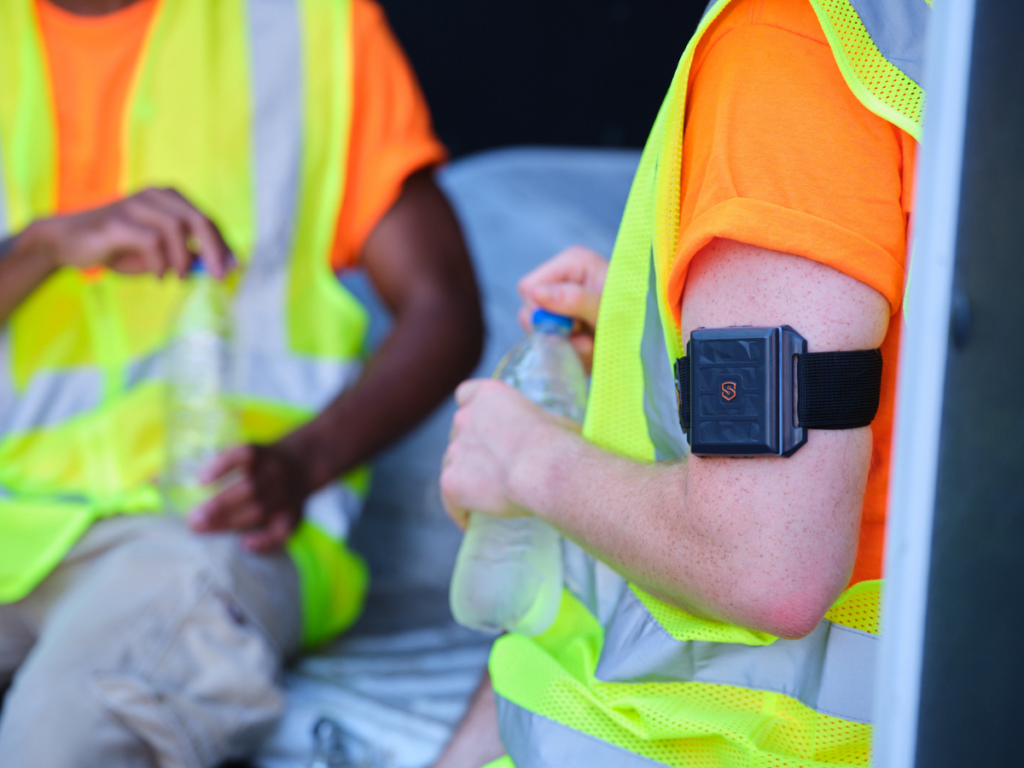Guest post by Safety Knights
Heat stress isn’t just a seasonal problem; it’s a real danger at work that can hurt worker safety, productivity, and company profits. Most employers know that heat-related illnesses like heat exhaustion and heat stroke can be dangerous right away, but many don’t realize the long-term costs they can have on their business. Heat stress has a lot of effects, from lower productivity to more workers’ compensation claims.
In this article, we’ll talk about the real costs of heat stress at work and why using modern technology to prevent it is not only good for your health but also good for your business.
Lost Productivity: The Silent Drain on Operations
When the temperature goes up, workers get less done. ScienceDirect says that productivity drops by about 2.6% for every degree Celsius (75°F) above 24°C (75°F) in places where people have to work hard. It might not seem like much, but the costs add up quickly when you look at whole workforces, like construction crews, factory lines, and utility teams.
- According to a report from Public Citizen, heat-related productivity losses cost the U.S. economy almost $100 billion every year.
- Extreme heat has caused tens of billions of dollars in lost productivity every year in states like Texas and Florida (Center for American Progress).
For businesses that need to meet tight deadlines and produce a lot of work, even a small drop in productivity per worker can lead to missed deadlines, longer project timelines, and lower profits.

Medical Costs and Workers’ Compensation Claims
Heat stress isn’t just uncomfortable; if you don’t do anything about it, it can be life-threatening. In addition to the loss of life, employers also have to pay a lot of money for healthcare and workers’ compensation claims.
- According to a study of heat-related illness claims, the average cost of a compensable claim was $1,916, while the average cost of a non-compensable claim was $537 (NIH).
- People who get sick from the heat often miss a lot of work. In Ontario, people who got hurt from the heat missed an average of 13 workdays per case, and some cases missed as many as 93 days (NIH).
When claims pile up, employers not only have to pay for them directly, but they also have to pay more for insurance and deal with more paperwork.
Downtime and Operational Disruptions
When a worker gets sick from heat stress, the effects go beyond just the cost of medical care. To cover shifts, supervisors have to change schedules, hire temporary workers, or pay overtime, all of which cost more money for the company.
Extreme heat makes it hard for people to work, which costs the economy $2.1 trillion a year around the world. By 2030, this number is expected to rise to $2.4 trillion a year.
These problems can be very bad for businesses that don’t make a lot of money. When teams are stretched too thin, projects get put off, contracts risk penalties, and morale goes down.
Human and Legal Costs
The costs to people are hard to measure, but the costs to money are easy to measure. From 1992 to 2022, 986 workers died in the U.S. because of heat exposure, which is an average of 34 deaths per year. More than a third of these deaths were caused by construction work (EPA).
The International Labour Organization (ILO) also says that more than 26 million people around the world have chronic kidney disease that is linked to working in hot conditions (Business Insider).

How Employers Can Minimize These Costs
The good news? Most of these costs can be avoided. Employers can take a proactive approach to heat stress by using a multi-layered strategy:
- Learning and Training: Make sure that both supervisors and workers know how to spot the first signs of heat-related illness.
- Changes to the workplace: Add shade structures, hydration stations, and shift schedules that change during the hottest times.
- Acclimatization Programs: Help workers get used to working in hot places over time.
- Wearable Safety Technology: SlateSafety’s connected wearables, for example, keep track of workers’ vital signs in real time and send out early warnings of heat strain before it becomes a medical emergency.
Companies can protect their workers, cut down on claims, and boost productivity by putting these measures in place. This will turn safety into a measurable return on investment (ROI).
Final Thoughts
Heat stress is bad for business as well as safety. The hidden costs are big and getting bigger. They include lost productivity, medical bills, downtime, and fines from the government. Employers who don’t do anything about heat stress risk losing money and the trust and health of their workers.
Organizations can turn the tide by investing in proactive measures and using modern safety technology. This will protect both workers’ health and the business’s ability to handle rising temperatures.
What Are The Safety Knights?
At Safety Knights, we know that being an effective safety leader means more than following rules and procedures—it’s about building communities where safety professionals can connect and share solutions for challenges like extreme heat.
The Mission
Safety Knights is a global community of safety professionals dedicated to learning, collaboration, and growth. Our mission is simple:
To create the world’s best space for safety pros to network, share ideas, and solve real-world safety challenges.
A Safe Place for EHS
- Get real, judgment-free advice.
- Post anonymously if you ever feel unsure.
- Enjoy free support, 24/7.
One Source of Truth
We’re building the ultimate EHS resource—by safety professionals, for safety professionals.
The Vision
We believe safety and health should be central to the future of business. Join our community for free to enhance your workplace safety programs and connect with passionate safety pros around the world.
Ready to be part of the Safety Knights community? Sign up here and elevate your safety leadership game!

